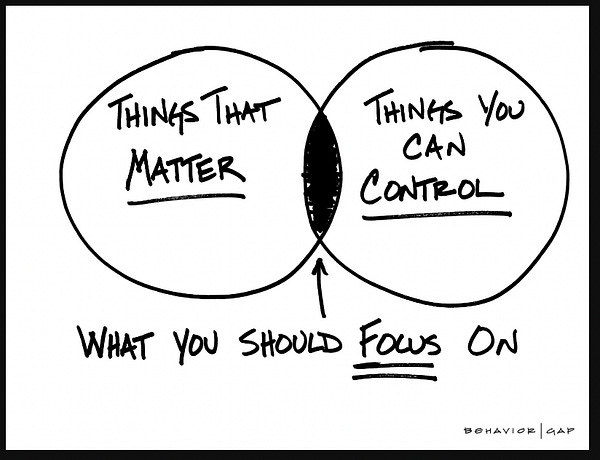This week on tips - Schedule your priorities, add pizzazz to your slides, and a 3D trick for the brain
Hello dear reader,
We are almost halfway through March, which means that soon a quarter of the year will be finished, and it is always a good idea to check on your yearly plans and goals; for that, I brought you something today. So let’s dive into edition XVI!
Focus on what is in your control
Even if it means simply notifying the other person that you require assistance or that they should send you something.
This is illustrated nicely by Carls Richards, a financial planner, and columnist for the NY Times:
Something that helps me personally is to list all the things that have to be done to achieve what I want and cross out the things that I cannot directly take matters with my own hands and replace them with an action I can control. I hope that this helps you.
The key is not to prioritize your schedule, but to schedule your priorities. – Stephen Covey.
A carnival of presentation slides templates
Ready to add some pizzazz to your presentations? On more than one occasion, you might have entered a meeting or participated in a conference where a great message or idea gets overshadowed by a bad presentation. If that person is sometimes you or a colleague, you don’t have to be anymore.
With hundreds of templates for both Google Slides and PPT, SlidesCarnival has a slide for every occasion. Whether you're presenting at a business meeting or school project, their templates range from sleek and professional to fun and colorful, making your presentations stand out.
A 3D trick for the brain
Have you ever wondered why we could see or perceive objects and scenes in 3D? It all comes down to how our eyes work together to create depth perception. When we look at an object, each eye sees a slightly different image, which our brain then combines to create a three-dimensional image.
Technically, we first record everything in 2-D or two dimensions, meaning the images we see are flat and lack depth (ref.). However, our brain uses visual cues like perspective, shading, and occlusion to interpret these 2-D images as 3-D objects and scenes. Why am I telling you this? Because I found this video of a 3D that shows precisely what I just described:
If you want to read more about it, it is called stereokinetic stimulus - it lies within the realm of depth illusion.
This is it for now. Please share it with your friends, coworkers, family, classmates - anyone that might find these weekly tips useful.
Sending you all the good vibes for you to have an outstanding week,
Fernando






